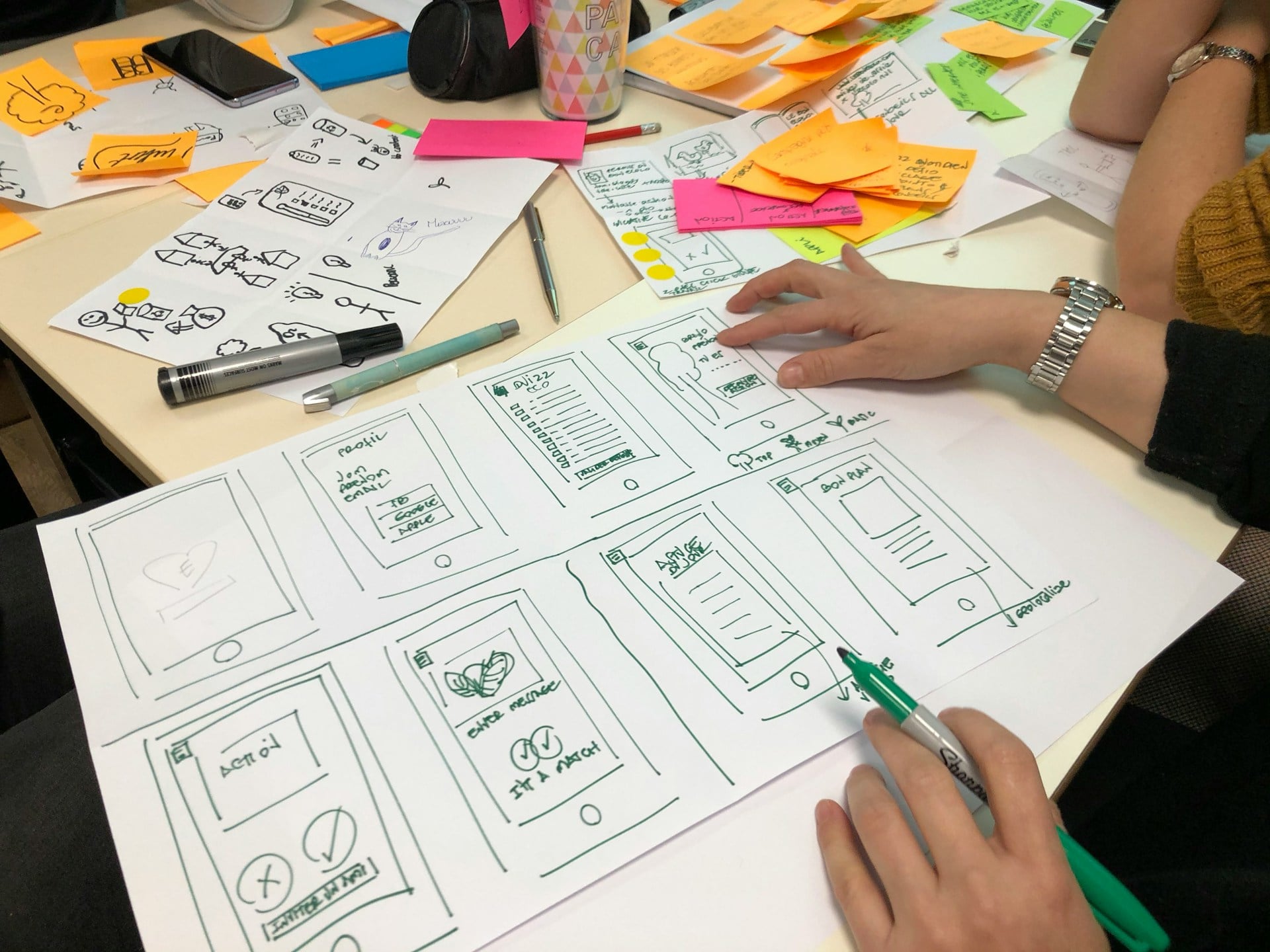It is a proven fact that collaboration leads to better design outcomes. Getting people together is the best way to talk about issues, generate new ideas, and come up with solutions. Collaboration can take numerous forms, ranging from small casual working sessions and group assessments to in-depth workshops.
When developing a product, each team member must be familiar with the product requirements. One effective way of collaboration within the team is a product design workshop. Workshops are about getting things done and are frequently utilized as milestones to get things started or make decisions.
This guide provides a detailed explanation of product design workshops, outlines their benefits, and presents a step-by-step guide to running successful workshops. So, let’s get started.
- What are Product Design Workshops?
- Benefits of Product Design Workshops
- 5 Tips to Run a Successful Product Design Workshop
- 5 Tips from Experts on How to Run a Product Design Workshop
- Wrapping Up – Ready to Hold the Product Design Workshop?
What are Product Design Workshops?
Product design workshops provide an opportunity for a team to work together to solve an issue by going through a series of exercises collaboratively to achieve a certain goal. Think of it as a brainstorming exercise that helps the client and design team bring their product visions into alignment.
A product development workshop provides the team with the resources necessary to initiate a product design. This could be a list of ideas, sketches, simple samples, or other things that everyone agrees on.
Product Design Workshop & The Role of Facilitator
A facilitator is required for every workshop. In theory, a facilitator should only be responsible for directing and navigating the session, not for contributing input to the conversation.
In practice, the facilitator may suggest points or an entire discussion so that the team can progress in the same direction.
The facilitator is also responsible for keeping the session and workshop activities on track, ensuring that the team does not waste time on digressions, and scheduling breaks as needed.
Benefits of Product Design Workshops
Running design workshops is a great way to get people open to creative thinking at the start of a project. They also lay the groundwork for designing a successful, purpose-driven product. Simply put, workshops are an important part of the product development process and offer many benefits, as follows:
1. Encourage Collaboration and Co-creation to Foster Creativity
A design workshop is an excellent platform for bringing together the creative design team and engineers with all project stakeholders. It also gives people a chance to share ideas, come up with new ones, and build on existing ones while working together to ensure the project succeeds.
2. Reduce Risk
A design workshop allows the design team to detect risks early and mitigate them timely. Preconceived notions can be questioned, and important conversations about what will and won't work can be had in the workshop. In short, the team can lower the overall risk of an approach by working this out early on.
3. Actionable Results
The workshop's questions and ideas are documented in a shareable report. This report aims to understand the customer and the product and to drive the design and development journey of the product.
The workshop helps people understand the process better and conducts the planning and feedback cycles well. These milestones lay the framework for a more extensive design and prototyping phase.
5 Tips to Run a Successful Product Design Workshop
Different organizations can have different approaches to conducting product design workshops. However, below are a few effective tips to run a fruitful product design workshop:
1. Set a Goal
Write down why you're having this session in a few sentences when you are sending out a calendar invite. Then, attempt to express concrete goals in the form of tasks. Here are some examples of achievable goals:
- To communicate the design process and challenges to stakeholders.
- To help the design team understand business objectives and user pain points.
- To help shape product requirements so that a project plan can be created.
- To understand the effectiveness of the major feature upgrade to the existing product, such as incorporating automated AI customer service via Shulex VOC.
You may not always be able to achieve the desired outcomes, particularly if the participants are new to brainstorming sessions. The most important consideration is that you begin talking and preparing for the following steps.
2. Gather the Team
Ideally, everyone in your workshop should actively contribute, therefore keep the number of participants limited. It is found that small groups of 5-8 individuals are large enough to generate diverse ideas while remaining small enough for everyone to fully participate - this applies to both in-person and remote workshops.
Consider the professionals who can contribute their expertise to the problem you're attempting to solve. These questions might help you in selecting suitable people:
- Who manages the product?
- Who makes the company's decisions?
- Who knows the product's history?
- Who builds the product?
- Who is the client?
It's beneficial to bring in people with varying viewpoints, especially if the session is focused on problem-solving. So, keep that in mind as you create your invite list.
3. Prepare For the Workshop
This tip emphasizes defining the scope of work and preparing everything that will make the session comfortable and successful.
Gather the essential materials and resources to conduct the design workshop effectively. Find a suitable area with enough tables for everyone and large whiteboards. For showing data or a presentation, you'll most likely need a projector and screen.
Divide the product and structure workshop into sections to define the most challenging areas. Choose the activities, questions, and exercises that will assist you in getting to the core of the product.
After you've decided on the scope of the workshop, create an agenda with time frames for each activity. Keep in mind that each activity might take longer than planned, so make sure you leave some extra time.
4. Describe the Actions in Each Section
Get all the details worked out now so you know what you'll talk about with the group and what you'll do to reach your goals as a group. Introductions, brainstorming, drawing, and sharing ideas are some ideas to describe the actions in each section.
5. Ensure Fruitful Workshop Sections
Once you have defined the actions for every section, the next thing is to ensure that each section is conducted in a way that maximizes creativity and productivity. So, below are some tips and trips to ensure fruitful design workshop sections:
- Warm Up with Improv Games: It's important to spend some time at the start of your session to create the tone and get everyone thinking as a team. Improv games are an effective way to energize people and get them ready to be productive in your session.
- Be Cautious when Brainstorming: A good brainstorming session is all about making individuals feel comfortable enough to share ideas. It is recommended to dedicate a few minutes at the start of the session to set out some guidelines/rules for the brainstorming process.
- How to Sketch More Ideas: Sketches are frequently the most tangible item of a product development workshop, allowing participants to explore ideas independently. As a general guideline, 10-15 minutes of sketching time is more than enough for a one-hour lesson.
- Effectively Sharing Ideas: Have everyone post their sketches either on the virtual whiteboard or on the wall so that everyone in the group can view them all. Allow each participant a few minutes to go over their ideas, and also allow extra time, if feasible, for conversation.

5 Tips from Experts on How to Run a Product Design Workshop
Product design experts emphasize that the product design workshop is a creative and collaborative process that requires proper planning and execution. Below are the five tips from experts on how to run a product design workshop:
- Have each person write down their ideas before they share them with the group. As a result, they can organize their thoughts before hearing those of others.
- Request that everyone sketch their ideas from several angles. However, limit this duration to 10 minutes for each person.
- Don't let off-topic conversation disrupt your normal workflow. Put the product design discussion back on track politely.
- After each hour of thinking, take a five-minute rest. Freshen up the room, have a cup of coffee, and grab some food.
- Following the session, review the results and invite participants to add to the features they haven't yet touched.
Wrapping Up – Ready to Hold a Product Design Workshop
Organizing and running design workshops is crucial but can be difficult. However, by bringing together the right people and planning ahead of time, product design workshops can become a vital element for kicking off projects, discussing difficulties, and developing new ideas. Therefore, we will wrap up by recommending you follow the tips and tricks discussed in this guide and head for the product design workshop proficiently.






